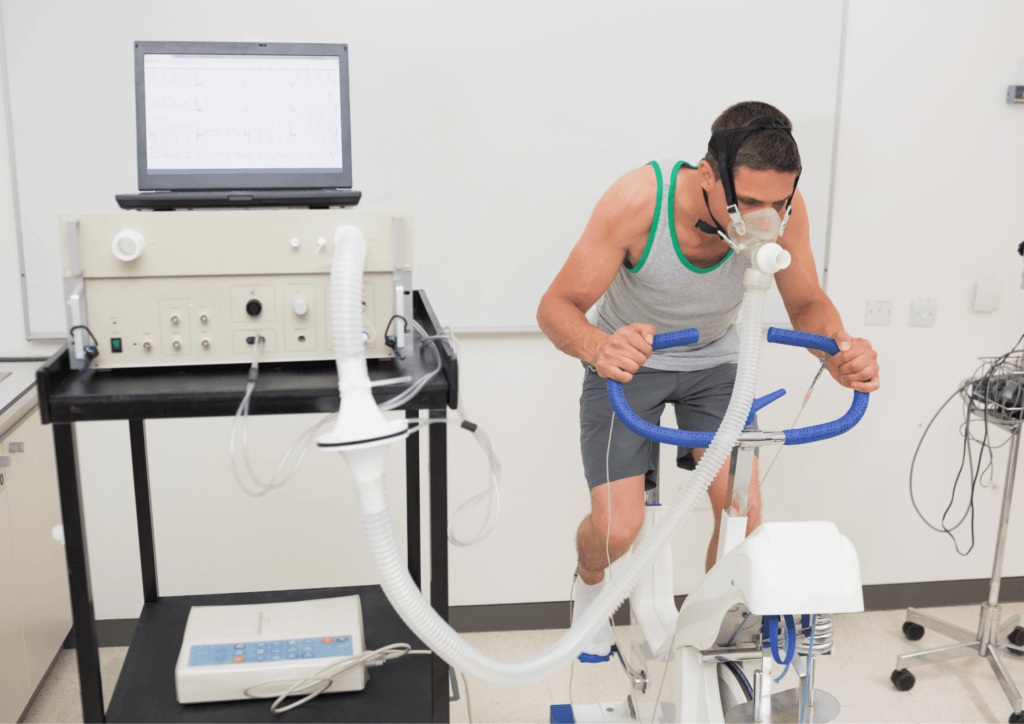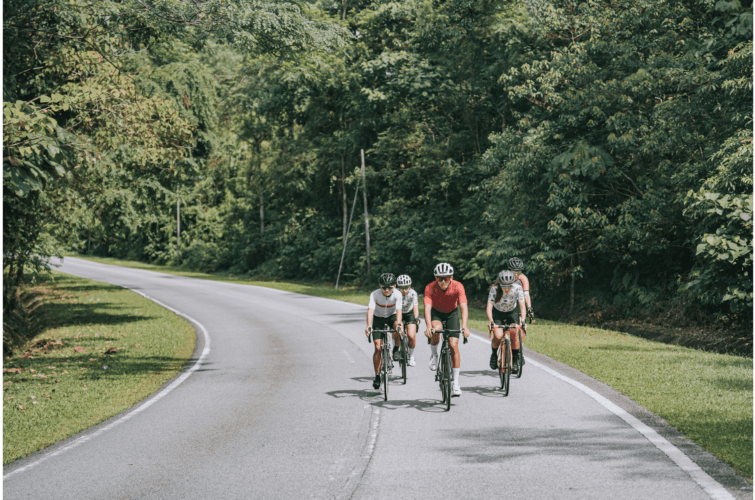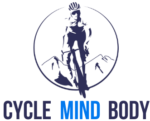Ever wondered how to ride longer and faster without hitting a wall or feeling drained? Well, here’s the secret: slow down.
Yep, you heard that right. Lower intensity training, like Zone 2 training, is the key to unlocking your cycling potential. By cruising at a steady pace, you’ll stimulate your body’s aerobic development and build up that endurance you need to conquer the road.
So, in this guide, we’re diving deep into the world of Zone 2 cycling training. We’ll uncover why it’s so important, how it can supercharge your performance, and most importantly, how you can make it work for you.
Defining Zone 2: Understanding the Basics

Zone 2 training refers to a specific intensity level within a 6-7 zone model, known as the “Endurance Zone.” This zone is characterized by a low-intensity pace that is comfortably sustainable for extended periods.
Many cyclists mistakenly push themselves into Zone 3, thinking that cycling harder will make them fitter. However, this often leads to burnout and fatigue rather than improved aerobic fitness adaptations.
It’s important to understand that Zone 2 training serves as the cornerstone of base training, providing cyclists with a foundation of aerobic fitness essential for higher intensity workouts down the line.
Operating within 55-75% of your functional threshold power (FTP), or 60-70% of your max heart rate, Zone 2 training allows cyclists to push their limits while remaining within their aerobic threshold, minimizing fatigue and optimizing endurance.
Unlike higher intensity zones that primarily engage fast-twitch muscle fibers, Zone 2 targets slow-twitch fibers, which are crucial for maintaining performance over long distances and durations. By incorporating Zone 2 training into their regimen, cyclists can build a solid foundation of endurance and set themselves up for success in their cycling endeavors.
Dr. Iñigo San Millán, a leading expert in sports physiology, underscores the critical role of Zone 2 training in optimizing performance and maximizing potential. Through his extensive work with elite endurance athletes, Dr. San Millán has observed that Zone 2 training accounts for a significant portion—often between 60% to 75%—of their overall training volume.
Benefits of Zone 2 Cycling Training

Building Endurance: The Cornerstone of Success
Endurance is not just about pushing through a long ride; it’s about the body’s ability to sustain effort over time, no matter the terrain or conditions. Zone 2 training plays a pivotal role in building this endurance foundation, laying the groundwork for cyclists to thrive in the saddle.
Training for sustained periods at a Zone 2 level helps to increase mitochondrial density within the Type I (slow twitch) muscle fibers. Mitochondria, often dubbed as “the powerhouse of the cell,” play a crucial role in energy production.
They process oxygen to produce ATP, the body’s energy currency. By enhancing mitochondrial density, Zone 2 training equips cyclists with a more efficient energy-producing machinery, allowing them to go the distance with ease.
Moreover, Zone 2 training builds capillary density around the Type I fibers. Capillaries act as the “pipe work” that delivers oxygenated blood to the muscles and removes metabolic byproducts like lactate and CO2. With more capillaries, there’s a greater delivery of oxygenated blood to the muscles, fueling endurance and promoting efficient waste removal.
Important cardiac adaptations are also stimulated by training in Zone 2 for sustained periods, including stroke volume. Stroke volume refers to the amount of blood pumped by the left ventricle per beat, a key determinant of cardiovascular fitness.
These adaptations demonstrate the effectiveness of Zone 2 training in enhancing VO2max, an ability often associated with high-intensity training.
In essence, Zone 2 training isn’t just about logging miles; it’s about transforming the body into an endurance powerhouse. By fostering mitochondrial biogenesis, capillarization, and cardiac adaptations, Zone 2 training lays the foundation for sustained performance and cycling success.
Fat Adaptation: Optimizing Metabolic Efficiency
Fat adaptation, a key benefit of Zone 2 training, revolutionizes metabolic efficiency, making the body a lean, mean, fat-burning machine. When cyclists immerse themselves in Zone 2 efforts, their bodies undergo a remarkable transformation.
Mitochondria, those tiny powerhouses within our cells, multiply in response to the sustained demand for energy. This surge in mitochondrial density amplifies the body’s oxidative capacity, allowing it to break down fat with unprecedented efficiency.
Zone 2 training also improves metabolic flexibility, a game-changing attribute for endurance athletes. As cyclists clock miles in the Endurance Zone, their bodies adapt to rely more on fat as a primary fuel source.
This shift in metabolic preference is akin to upgrading from regular fuel to high-octane gasoline. Suddenly, the body becomes less reliant on glycogen, sparing precious carbohydrate stores for when they’re needed most—those final sprints or grueling climbs.
But perhaps the crowning jewel of fat adaptation is its role in enhancing “FatMax,” the holy grail of endurance performance. FatMax represents the pinnacle of metabolic efficiency, the point at which the body can sustainably burn predominantly fat for fuel.
For cyclists, this translates to a higher threshold of power output while still tapping into fat stores—a game-changer during those epic endurance rides or multi-stage races.
Recovery and Injury Prevention: Striking a Balance
While high-intensity workouts offer an adrenaline-fueled challenge and can yield significant performance gains, they also come with a higher risk of injury and overtraining. The repetitive stress placed on muscles and joints during intense efforts increases the likelihood of strains, sprains, and other overuse injuries.
Additionally, the cumulative fatigue from frequent high-intensity sessions can lead to burnout, diminishing motivation and hindering progress.
In contrast, Zone 2 training provides a gentler stimulus to the body, promoting recovery and reducing the risk of injury and overtraining. By maintaining a moderate intensity level, cyclists can still achieve substantial endurance gains without placing undue stress on their muscles and joints.
This balanced approach allows athletes to sustain long-term progress by avoiding setbacks caused by injury or burnout.
Designing Your Zone 2 Cycling Training Plan

Establishing Your Zones: Personalizing Your Approach
When it comes to cycling, speed can be deceiving when it comes to measuring exercise intensity. Instead, cyclists should rely on calculated metrics such as Functional Threshold Power (FTP) or Threshold Heart Rate (THR) to determine their training zones accurately.
These personalized approaches ensure that workouts are tailored to each rider’s fitness level, allowing for optimal progression and adaptation over time.
To calculate your training zones, particularly for Zone 2 training, we recommend conducting an FTP test. This test involves pushing yourself to your maximum sustainable effort for a set duration, typically around 20 minutes. Your average power output during this time serves as your FTP, which forms the basis for determining your training zones.
Alternatively, if using heart rate as your metric, you can employ the age-old equation: 220 minus your age equals your maximum heart rate. However, it’s important to note that this formula may not be accurate for everyone, especially individuals with naturally higher or lower heart rates. Therefore, it’s advisable to use it as a rough estimate rather than a definitive value.
Zone 2 training is typically performed at 55% to 70% of your FTP or 60% to 70% of your maximum heart rate. For example, if your FTP is 220 watts, your Zone 2 effort would fall between 120 and 154 watts. Similarly, if you’re using heart rate and you’re aged 30, with a maximum heart rate of 190 (accounting for some variation), your Zone 2 training zones would range from 114 to 133 beats per minute (BPM).
Regardless of the metric you choose, the key is to maintain a consistent effort on the bike, whether it’s a set number of watts or an average heart rate. When riding in Zone 2, it’s essential to find that sweet spot where conversation becomes challenging but still manageable.
As a general guide, if you can maintain an easy conversation, you’re likely in Zone 1. If it’s difficult to talk but still possible, you’re likely in Zone 2. And if conversation becomes extremely challenging, you may be entering higher intensity zones. This “talking test” serves as a reliable gauge for determining your intensity level and ensuring that you’re training effectively within Zone 2.
Structuring Workouts: Finding the Right Balance
For beginners embarking on their Zone 2 journey, it’s recommended to dedicate at least 4-8 weeks to this style of training. During this time, aim to spend 60-80% of your training time each week in Zone 2. If you typically ride five times a week, this means three to four of those rides should be at this intensity.
Start with shorter 1-2 hour Zone 2 rides and gradually increase the volume over the following weeks. On the weekends, if possible, aim for longer rides, gradually working towards a 4-5 hour outing over the course of 8 weeks.
This progressive approach allows your body to adapt gradually to the demands of Zone 2 training, reducing the risk of overtraining or burnout.
As you develop a solid aerobic base fitness level, which you’ll notice from feeling physically fitter during Zone 2 rides and experiencing less fatigue afterward, you can begin to incorporate more intensive training.
However, it’s crucial to maintain the aerobic base you’ve built during the initial phase of Zone 2 training. Even as you transition to more intense workouts, dedicate at least one, ideally two, rides per week to Zone 2 training. This ensures that you continue to reap the benefits of aerobic conditioning while also pursuing higher intensity goals.
During Zone 2 training sessions, focus on maintaining a low-intensity effort at a consistent pace. While it’s tempting to push harder on climbs, aim to keep your effort level within the Zone 2 range, even if it means slowing down on steeper gradients.
When planning your routes, opt for terrain that supports low-intensity riding. Choose flat roads or routes with gentle rolling hills to maintain a steady effort without frequent interruptions.
Avoid high-traffic areas whenever possible to minimize stop-start riding, which can disrupt the flow of Zone 2 training.
In hilly terrain, consider using easier gear ratios to keep the intensity appropriately low on steeper gradients. This allows you to maintain a consistent effort level throughout the ride, maximizing the training benefits of Zone 2 without pushing into higher intensity zones.
By structuring your workouts with these principles in mind, you can create a Zone 2 training plan that maximizes your endurance, boosts your aerobic capacity, and sets the stage for long-term cycling success.
Practical Tips for Zone 2 Cycling Training Success

Patience and Persistence: Trusting the Process
Zone 2 training is a long-term investment in cycling performance, requiring patience, persistence, and dedication. Cyclists should embrace gradual progress and avoid the temptation to rush results by always training at high intensity.
Consistency and adherence to Zone 2 principles yield sustainable performance gains over time, laying the groundwork for continued improvement and success.
Zone 2 cycling training can also be an enjoyable and social experience, especially when cycling with a partner or group. However, it’s essential to choose companions who are of similar fitness levels and share the goal of staying within Zone 2 for the majority of the ride.
Attempting to keep up with faster cyclists may inadvertently push you into Zone 3, limiting the benefits of your training session. So, ride smart, stick to your Zone 2 targets, and watch your cycling prowess flourish over time.
Nutrition and Hydration: Fueling Your Rides Wisely
Proper nutrition and hydration play a pivotal role in supporting Zone 2 training efforts and optimizing performance. While Zone 2 workouts may be lower in intensity compared to high-intensity sessions, it’s crucial not to underestimate the importance of fueling your body adequately.
It’s easy to think that since Zone 2 workouts are low-intensity, they don’t need to be fueled like an intense workout. And while it’s true that you can make it through an endurance workout fasted, the risks generally outweigh the benefits.
Even if you’re trying to lose weight, you should properly fuel your workout, then create your calorie deficit off the bike.
We recommend fueling your Zone 2 rides with carbohydrates. Not only will this ensure you’re fueled for subsequent workouts, but it will also help fend off muscle damage.
Zone 2 rides provide an excellent opportunity to hone your nutrition strategy and train your GI system to handle carbs. Prioritize whole, nutrient-dense foods to fuel your workouts and aid in recovery.
Carbohydrate intake before, during, and after long rides can help replenish glycogen stores and sustain energy levels, while adequate hydration is crucial for maintaining performance and preventing dehydration.
By nourishing your body with the right fuel and hydration, you’ll optimize your Zone 2 training sessions and set yourself up for success on the road.
Mental Strategies: Staying Motivated and Focused
Zone 2 training requires not only physical exertion but also mental fortitude. Cyclists should develop mental strategies to overcome challenges and stay motivated during their rides.
Positive self-talk, visualization techniques, and setting achievable goals can help maintain focus and drive, ensuring that cyclists remain committed to their training regimen and inspired to reach their full potential.
Recovery Strategies: Maximizing Rest and Regeneration
Recovery is a critical component of Zone 2 training, allowing the body to repair and adapt to the demands of exercise. Cyclists should prioritize quality sleep, active recovery activities, and stress management techniques to support their body’s recovery processes.
By allowing adequate time for rest and regeneration, cyclists can optimize their performance and minimize the risk of overtraining or burnout, ensuring that they’re ready to tackle their next workout feeling refreshed and revitalized.

